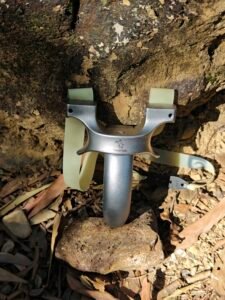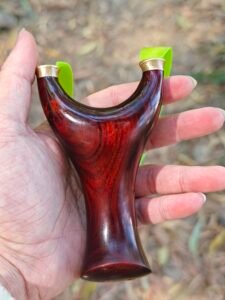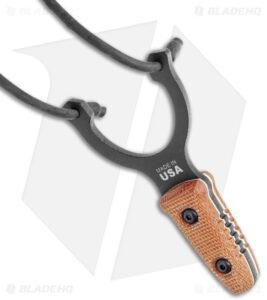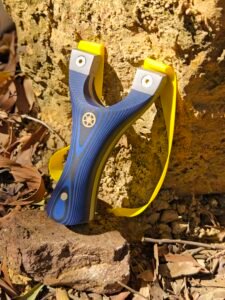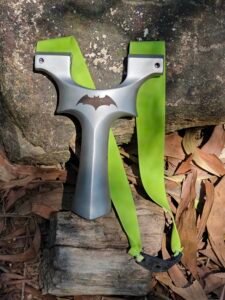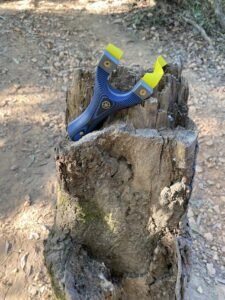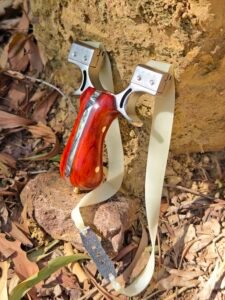When you fire your slingshot, the journey to a perfect shot starts in your hand. An ergonomic handle isn’t a luxury—it’s the foundation for consistent accuracy, reduced fatigue, and genuine shooting enjoyment. In this in‑depth guide, we’ll reveal exactly what makes a handle ergonomic, compare real‑world materials, break down grip styles for beginners and pros, and spotlight design features that elevate performance.
“A well‑designed handle feels like an extension of your body—every shot becomes second nature.”
🎯 1. Defining Ergonomics in Slingshot Handles
Ergonomics means designing a tool to fit human anatomy, minimizing strain and maximizing control. For slingshot handles, that translates to:
Natural Alignment: Your wrist, thumb and fingers line up effortlessly.
Balanced Weight: The center of gravity sits just below your knuckles.
Comfortable Contact Points: No sharp edges, no pressure hot spots.
Key Benefits:
Reduced wrist and forearm fatigue
Tighter shot groupings
Fewer blisters and sore spots
✋ 2. Three Core Grip Styles & Their Handle Needs
2.1 Pinch Grip
You hold the frame between thumb and index finger—ideal for speed shooting and snap‑release tricks.
Handle Form: Slim “waist” at mid‑section, minimal palm swell.
Material Preference: Smooth G10 or anodized aluminum for rapid transitions.
2.2 Hammer Grip
All fingers wrapped around like a hammer—beginners’ go‑to for stability.
Handle Form: Generous palm swell, deep finger grooves, slight flared base.
Material Preference: Warm wood (walnut, maple) or micarta with tactile texture.
2.3 Thumb‑Supported Grip
Thumb rests on a platform ledge for precision and alignment—favored by long‑range plinkers.
Handle Form: Integrated thumb shelf, curved backstrap to cradle the palm.
Material Preference: Carbon composite or rubber‑overmolded aluminum for a secure feel.
🔍 3. Material Showdown: Wood vs. Micarta vs. G10 vs. Aluminum
| Material | Comfort & Feel | Durability & Weather Resistance | Weight | Cost Range |
|---|---|---|---|---|
| Hardwood | Warm, natural, customizable | Moderate (needs sealing) | Medium | $–$$ |
| Micarta | Grippy, moisture‑wicking | Excellent (waterproof) | Medium‑Heavy | $$ |
| G10 | Textured, non‑slip | Outstanding (chemical‑/heat‑resistant) | Medium | $$–$$$ |
| Aluminum | Sleek, precise machining | Excellent (anodized finish) | Light | $$–$$$ |
3.1 Hardwood Handles
Pros: Insulating warmth, easily carved to contour your hand.
Cons: Prone to swelling or cracking if not sealed; heavier in humid climates.
3.2 Micarta Handles
Pros: Layers of resin‑impregnated fabric yield a grippy, water‑resistant surface.
Cons: Slightly heavier; premium grades can be pricier.
3.3 G10 Handles
Pros: Ultra‑strong fiberglass laminate with consistent, aggressive texture.
Cons: Can feel rigid if not contoured; edges must be rounded.
3.4 Aluminum Handles
Pros: CNC‑machined to exact contours, extremely durable and lightweight.
Cons: Cold in low temperatures; requires rubber or resin inserts for shock absorption.
⚒️ 4. Essential Design Features for Ergonomic Mastery
Palm Swells & Finger Grooves
Guide your fingers into the same spot each shot.
Flared Butt/Base
Prevents your hand from sliding off during high‑tension draws.
Curved Backstrap
Matches the natural arch of your palm, spreading pressure evenly.
Textured/Matte Finishes
Ensures grip even when sweaty or wet; avoid glossy slick surfaces.
🧠 5. Tailoring Ergonomics: Beginners vs. Experienced Shooters
Beginners
Handle Choice: Generous palm swells, clear finger gutters, thumb rest.
Style Tip: Start with a micarta or wood handle—warm, forgiving, easy to modify.
Experienced Shooters
Handle Choice: Slimmer profiles for rapid repositioning, integrated sight‑rail zones.
Style Tip: Experiment with hybrid materials—G10 body with rubber‑overmold inlay.
🏁 6. Beyond the Grip: Fitting & Fine‑Tuning Your Handle
Test‑Fire Before Finalizing
Dry‑fire with protective eyewear to feel balance and grip comfort.
Add Custom Overmolds or Grip Tape
Silicone or rubber sleeves can transform a slick aluminum handle into a plush, sticky embrace.
DIY Contouring
Wood handles can be sanded; G10 edges can be rounded with high‑grit sandpaper.
Balance Check
The ideal center‑of‑mass sits just below the fork tines—adjust by adding small weights or shims in the handle bottom.
🎉 Conclusion: Grip Your Path to Consistent Accuracy
An ergonomic handle is more than a comfort upgrade—it’s the secret weapon that turns guesswork into precision. By choosing the right grip style, material, and design features, you’ll shoot longer without fatigue, land tighter groups, and feel an intuitive connection with every shot.
Whether you’re carving your own hardwood handle or ordering a precision CNC‑machined alloy grip, prioritize ergonomics first. Your hand will thank you with every bull’s‑eye.
Explore Our Ergonomic Handle Collectionx👉Learn more

